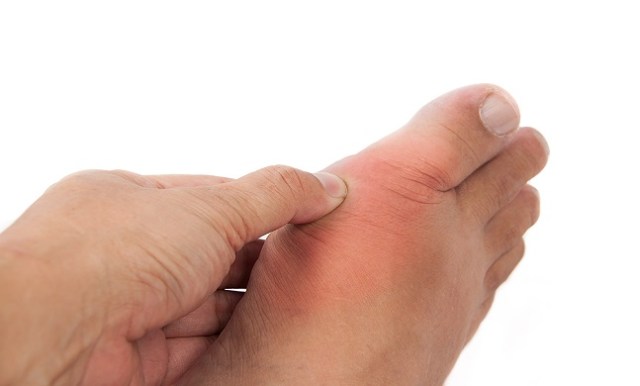Gout
What is Gout?
One of the most common forms of arthritis, gout is found in people with high concentration of uric acid in their blood, which later develops needle-like crystals in the joints. The condition is characterized by severe attacks of pain, redness, swelling and tenderness in the joints. The incidence of gout increases with increasing serum urate levels. The highest incidence of gout occurs between the age of 30 to 45 in men and 55 to 70 in women. It is rare in children and in premenopausal women, partly due to mild uricosuric effect of estrogenic hormones.
Stages/Types of Gout
Gout has 4 stages or types, namely-
- Asymptomatic hyperuricemia: The period before the first gout attack characterized by increased levels of uric acid in the blood is termed as asymptomatic hyperuricemia.
- Acute Gout arthritis: When uric acid crystals form in a particular joint, resulting into occurrence of intense pain and swelling, the condition is termed as acute gout arthritis. The pain increases in severity over few hours and peaks within 24 hours.
- Intercritical/interval gout: Interval gout, also known as intercritical gout is the time period between gout attacks. During this time, there is no pain even though, the gout isn’t gone yet. It may last from months to years.
- Chronic Gout: As the body’s urate pool accumulates, there is a tendency for gout flares to become more prolonged and additive, resulting in chronic destructive arthritis. The condition can lead to aggregation of urate crystals forming tophi.
Risk factors for Gout and prevention
Following are the risk factors for gout-
- Hyperuricaemia
- Obesity, rapid weight loss
- Diet high in purines (e.g. red meat, shellfish)
- Alcohol (especially beer and spirits), high fructose drinks (for examples sodas, some juices)
- Drugs (thiazides, ethambutol, pyrazinamide, cyclosporine)
- Renal insufficiency
- Lead exposure
- Organ transplantation
- Diseases (e.g. hypertension, diabetes, hyperlipidemia, metabolic syndrome, hematologic malignancies)
- Genetic
In order to prevent gout, the following points should be kept in mind-
- Limiting alcohol intake
- Controlling how much purine rich food you consume
- Balancing weight
- Exercising
- Curbing smoking
- Eating a low fat diet
Treatment
- Lifestyle Modifications:
Gout has historically been attributed to overindulgence in alcohol and food and to obesity. A recent study demonstrated independent association of adiposity, weight gain, hypertension and diuretic use with an increased risk of gout. Weight loss was found to be protective. The study also confirmed some of the long standing purported risk factors for gout-meat, seafood, beer and liquor.
A potential protective effect of the low-fat dairy products was identified. Inclusion of skimmed milk and /or low fat yogurt, soybeans and vegetables sources in the diet should be encouraged. Gout patients could be allowed coffee and should limit fructose intake.
- Drugs:
Drugs can help in controlling gout and the symptoms linked to it. Visit our clinic for getting the right prescription suited for you.

